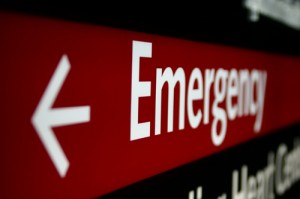Accident Case Overview
The Civil Trial Process
Trial is a civilized way to resolve disputes when people can’t agree on an acceptable resolution. Yet, people instinctively fear going to trial. The whole process is foreign and intimidating to the ordinary citizen. Trials are costly, time consuming and emotionally draining for both plaintiffs and defendants. The exact progress of any particular case will differ depending on the practices in the jurisdiction and the complexity of the case. For example, cases involving minor injuries and a simple accident will tend to move quickly. Cases involving serious and disabling injuries, death or multiple victims and defendants tend to move more slowly and deliberately. Federal cases tend to move quicker because caseloads in the Federal Court System are lower than most state court systems.
But most cases never make it to trial. In fact, most cases are settled without filing a lawsuit. And of those that do require filing a lawsuit, most are settled long before trial. But, the key to obtaining a good settlement is to conduct a thorough investigation and be prepared to take the case to trial.
- 1. Investigation
- 2. Complaint or Petition for Damages
- 3. Discovery
- 4. Pre-Trial Motions
- 5. Judge Trial / Jury Trial
- 6. Deliberation
- 7. Post Trial Motions
- 8. Appeals
Investigation: All successful cases begin with an investigation to uncover evidence to establish the legal fault of the defendant. This will involve interviewing the injured person, their relatives or survivors, and any witnesses to the accident. We send an investigator to locate witnesses, take recorded statements as well as photograph, video or diagram the location of the accident. We retain expert witnesses, such as accident re-constructionists or engineers to establish or explain how an accident occurred and how it could have been prevented. We retain medical or psychological experts to help establish and explain the extent of our client’s injuries. We often retain economists and life care planners to assist in determining the value of our client’s loss and the real dollar cost of any required future medial care or medical doctors.
Demand: Once sufficient evidence is uncovered to establish a credible claim, meaning one that is more than a mere allegation and has some real basis in fact, a claim for damages can be made. Most of the time this involves contacting the defendant or the defendant’s insurance company adjuster and making a formal settlement demand. It is not necessary to make a formal settlement demand before filing a lawsuit. However, informal or formal negotiations at this point usually lead to an acceptable settlement. If settlement is not reached before the applicable statute of limitations date, a lawsuit must be filed in a court that has jurisdiction to hear the case. Otherwise the injured person or their survivors will lose all legal rights to recover for the injuries or death of their loved one.
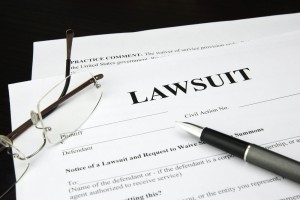
The Lawsuit: A civil lawsuit begins with filing of a petition or complaint by the injured or aggrieved person against the defendant. Most civil suits seek damages to compensate the plaintiff for injuries or other losses caused by the acts of the defendant. A civil lawsuit might involve a car or truck wreck, medical malpractice, a contract claim, a claim of discrimination or some other claim for damages.Once the defendant is served with the petition or complaint he must file a formal answer to the allegations against him. A defendant must set out all defenses in the answer and may bring any claims he may have against the plaintiff.
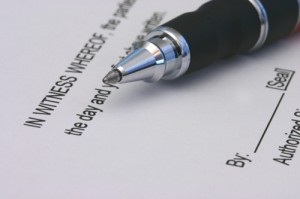
Discovery: Discovery is the process where each side has the chance to learn about the other side’s case. It takes place is several ways. Commonly depositions are taken of the parties and witnesses. At a deposition the witness is placed under oath and asked questions by the lawyers. A court reporter transcribes the testimony and witness has the opportunity to review their statement. The parties may be required to answer written questions called interrogatories. Interrogatory answers are generally prepared with the assistance of counsel and the party must swear or affirm the truth of the answers.Discovery may also involve the production of documents such as medical records and bills, and physical evidence like photographs of a car or truck crash. It may involve the inspection of the accident scene with an expert witness such as a accident reconstruction expert in a car crash case or a safety expert in premises liability case where merchandise fell on a store customer or the customer was injured by a defect in the property. “We try to take full advantage of the discovery process to learn about the case and prepare you for trial. We will prepare you for your deposition and be there to provide advice as necessary and prevent undue harassment and embarrassment.”
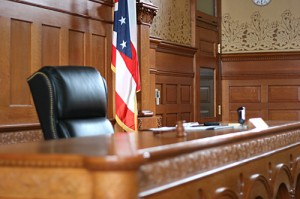
Trial Motions: Once discovery is completed each side is allowed to file various motions. Common motions attempt to have the case resolved in a party’s favor without trial or to limit the evidence or narrow the issues presented at trial.After pre-trial motions, the case is docketed for a judge or jury trial. In some jurisdictions, like Louisiana, a jury trial is only available if the damages are likely to exceed a particular amount of money. Otherwise the case is tried before the judge alone.
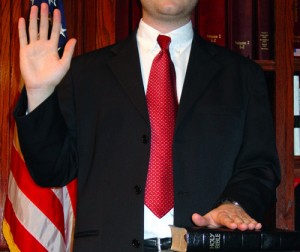
An Adversary Proceeding: Modern trials are adversary proceeding where two lawyers, acting as surrogates for their clients battle in a courtroom, as Clarence Darrow once said, ”Not for justice, but to win.” Each lawyer is an advocate for his client’s view of the case. The adversarial process dates back to the days of trial by combat when each “suitor” would choose a champion who would fight to the death for him.
Voir Dire & Jury Selection: In cases where a jury is allowed, the process begins with something called “voir dire.” Voir dire is French, meaning to “speak truthfully.” During voir dire the judge and the lawyers question prospective jurors to determine whether they can be fair and impartial. In most jurisdictions the lawyers participate in voir dire in varying degrees. Usually the lawyers are allowed to question the prospective jurors in the presence of the court about a wide range of subjects. In the federal system, the judge has complete discretion on whether to allow the lawyers to conduct voir dire and to what degree it will be permitted. Often the judge alone will voir dire the jury in federal court. Once voir dire is competed the lawyers are allowed to “strike” prospective jurors they are not comfortable with. These are limited in number and are known as “preemptive challenges,” meaning that no explanation is required for asking that the prospective juror not be seated. Both sides are allowed an unlimited number of “challenges for cause.” However, the party challenging the juror must show the court why the jury is unfit to serve. During jury selection each lawyer looks for people who will be receptive to the evidence he will present. “We don’t pick jurors based on stereotypes. We look for intelligent articulate people who want to be good jurors and who are open-minded and willing enough to listen to the all the evidence before deciding the case.”
Opening Statements: The trial actually begins with opening statements. Both the Plaintiff and Defense counsel tell the jury what they think the evidence will show. The opening statement sets the stage for the presentation of the evidence. It is a critical part of the trial because evidence is not always presented in an apparently logical and easily understood fashion. “In opening statement we try to tell our client’s story and tell how the evidence will show the defendant is responsible for the damages my client has suffered. Our goal is to provide a jury a framework into which it can place the testimony of each witness, make sense of the evidence and understand why they should make the defendant pay for the damage he has caused to my client.”
Presentation of Evidence: The Plaintiff’s case in chief In a civil case, the plaintiff bears the burden of proof. We are all familiar with the burden of proof in a criminal case–the prosecutor must prove the defendant is guilty beyond a reasonable doubt. But, the burden of proof in a civil case is different. The plaintiff need only prove his case by a preponderance of the evidence – i.e. that more probably than not the defendant is liable to the plaintiff. The plaintiff presents his case through witnesses who testify under oath by direct examination. Plaintiff counsel asks questions and the witness answers. Defense counsel has the opportunity to cross-examine each witness. “Testifying in court is intimidating to many people. We prepare our clients and witnesses for the uncertainties of trial and the stress of cross-examination. That way they are less intimidated by the process and better able to communicate and articulate what they know in court.” The Defendant’s case in chief In most civil cases the defendant will present a defense. Just as with the plaintiff the defendant presents his case through witnesses that his lawyer calls on direct examination. Any witness called by the defense is subject to cross-examination by the plaintiff lawyer. The importance of cross-examination cannot be overlooked. Cross-examination is one of the most important skills of a plaintiff lawyer. During discovery we will have learned as much as possible about any defense that will be presented and the likely witnesses that will be called. During cross-examination we may elicit testimony from the witness that is favorable to our case, or try to establish that the witness testimony is unimportant and just a smokescreen. We may try to show the witness is biased, prejudiced or has some motivation to testify falsely. “Cross-examination has been dubbed the greatest engine for reaching the truth that has ever been devised. My goal on cross-examination is to undercut any defense presented.”
Plaintiff’s rebuttal: Once the defense rests, the plaintiff has the option to call witnesses to rebut the defense case.
Closing Arguments: After the evidence is closed, the Plaintiff and the Defense counsel will argue their respective cases to the jury. In closing a lawyer is allowed wide latitude to argue the inferences and conclusions that can be drawn from the evidence. Closing is the lawyer’s opportunity to explain the significance of various pieces of evidence, show how the evidence relates to the law and passionately plead his client’s case. “In closing argument we try to bring the case full circle back to my opening statement and our client’s story. We try to show how the law and evidence bear out the client’s story and support a verdict for the plaintiff and a substantial damages award.”
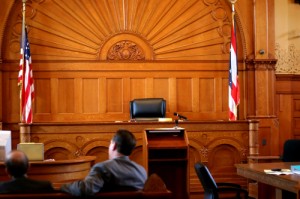
Deliberation: In a jury trial, after the lawyers have argued their cases, the judge will instruct the jury on the law that applies to the case. The jury will retire, select a foreperson and deliberate in secret. Juries must decide the case solely on the evidence presented in court. After the jurors deliberate they vote on whether or not they believe the plaintiff proved his or her case by a preponderance of the evidence.In most jurisdictions and in the federal system a jury vote must be unanimous to reach a verdict. If the jury finds for the plaintiff they will be required to consider whether to award damages and how much to award.
If the case is tried to the judge alone, he may rule from the bench or may order the case submitted on written briefs. Or, he may want to think about the case and research the law, and choose to take the case under advisement while he does this.
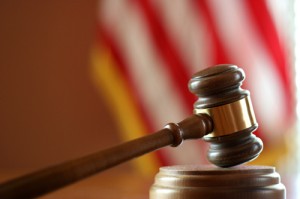
Post-Trial Motions: Once the trial is over either side has the opportunity to make certain motions. This might include a motion for new trial or to reduce or increase any damages awarded. The trial judge decides these motions after the jury has been released.
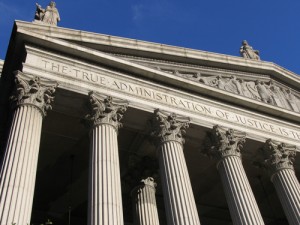
Appeal: After a judgement is rendered either side usually has a right to appeal the verdict to a court of appeals. A court of appeals consists of a panel of judges who review the record and consider the arguments of lawyers for the plaintiff and the defendant. If it finds a serious error in the proceedings, it may order a new trial or increase or reduce the amount or kind of damages awarded. In some cases the court of appeals may set aside the jury verdict and enter a judgement in favor of the party who lost in the trial court.
Most civil appeals are not successful. However, this should not discourage a person with a meritorious issue from appealing an adverse verdict. Judges and juries are humans. Like all of us they can have bad days and make mistakes. Courts of appeal exist specifically to review the decisions of trial judges and juries and to ensure that the parties were given a reasonable opportunity to achieve a fair and just result.
The Kind of Accident Cases We AcceptHow We Present an Accident Case Accidental Injury FAQ’s

